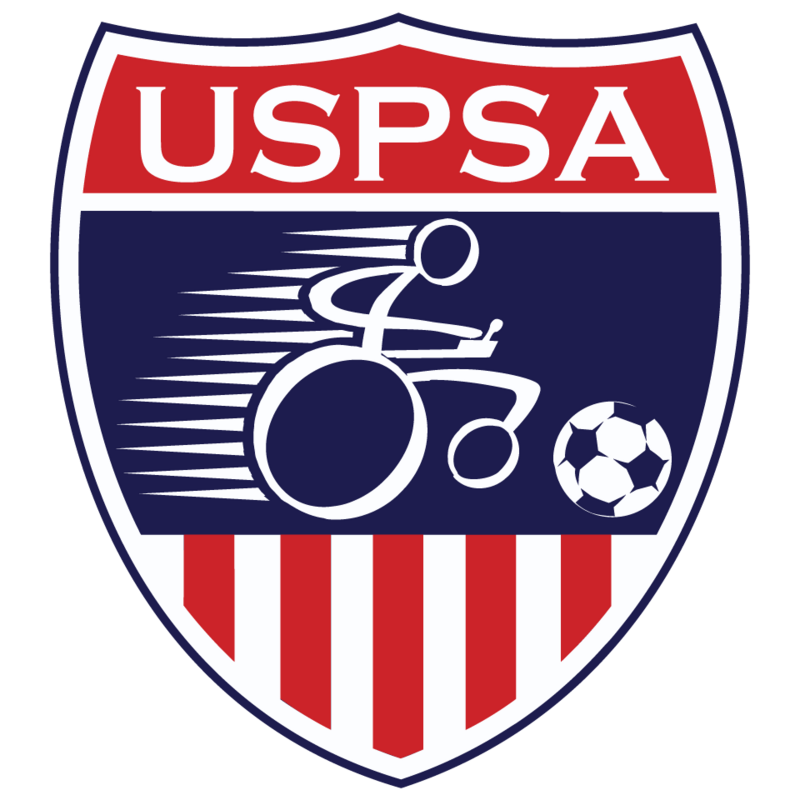
Last month in episode 2 of our new podcast Adventures in Accessibility we sat down with Chris Finn. It was here we explored the far reaches of disability, access, and inclusion. Chris became quadriplegic at age 21, but that did not stop him from exploring his competitive edge. He discovered power soccer and helped in developing the National Association and the International Federation of Power Soccer. He was also the coach for the United States National Power Soccer Team where they have taken on a few national titles. Being competitive and very interested in sports myself I was curious to explore more about the world of powerchair soccer. Previously I have written about Beep baseball and today we are going to take a deeper dive into powerchair soccer and everything it has to offer.
What is Powerchair Soccer
Powerchair soccer is a game played by athletes who are disabled and use a powerchair. A powerchair for those who might not know is an electric wheelchair propelled by the means of an electric motor. The soccer powerchairs are each equipped with a specialized footguard attached at the bottom. The attached footguards are to kick the soccer ball. The object of the game is to maneuver the ball over the goal line of an opposing team while preventing them from doing the same. Powerchair soccer is the first competitive team sport designed and developed specifically for power wheelchair athletes. Any person that uses a power wheelchair is invited and eligible to play. This includes people from five years old and up. Most athletes have quadriplegia, multiple sclerosis, cerebral palsy, head trauma, stroke, or another physical disability. The only rule is that each person must be able to operate their powerchair in a safe manner.
We have a team, now what?
A soccer match includes 2 teams of 4 powerchair users. On average teams have 8 total players. 4 to play and 4 used as substitutes. The overall “goal” is to take an 18-inch oversized soccer ball over the opposing teams goal line. The game is played indoors in a gymnasium on a regulation sized basketball court. The court must be a minimum of 82 feet long and 46 feet wide. The surface of the court must remain hard, smooth, and level to ensure there is not obstructions for the powerchairs. Similar to a basketball court the field is divided into two halves. The two longer boundary lines are touch lines and the two shorter lines are the goal lines. The goal lines represent the edge of the goal area which is 26 feet wide and 16.5 feet deep.
The ball used is an oversized soccer ball, measuring in at 18 inches. The ball is required to have an appropriate pressure in that it minimizes bouncing and at the same time is not too low that the powerchairs will run over it. The powerchair itself must have 4 or more wheels and have a maximum speed of 6.2 mph forwards and reverse. All users must always use a lap belt. Each match is controlled by one referee to ensure the rules of the game are met. The game is complete when two 25-minute halves are finished.
The History
Powerchair soccer is sometimes also referred to as football. During the 1970’s a couple of teachers in France came up with a concept for students with physical disabilities who used power wheelchairs to push an old basketball to a goal. The game began to adapt and improve as time continued. In 1982 the game evolved over to Canada where they called it motor soccer and followed the rules of soccer and strategies of rugby and basketball. Continuing on to 1988 when powerchair soccer came to the Unites States. A few students in Berkeley, California created a disabled sports program. The U.S. rules have evolved since then, specifically speaking to no speed limits and using an exercise size ball. In 2005 the countries came together to create an international governing body called the International Powerchair Football Association (IPFA). In 2006 the U.S. came together and formed the United States Power Soccer Association (USPSA). From there the rules became standardized and now it is estimated that over 250 teams compete within the Federation Internationale De Powerchair Football Association worldwide.
For more information on powerchair soccer check out Episode 2 of Adventures in Accessibility podcast featuring Chris Finn.